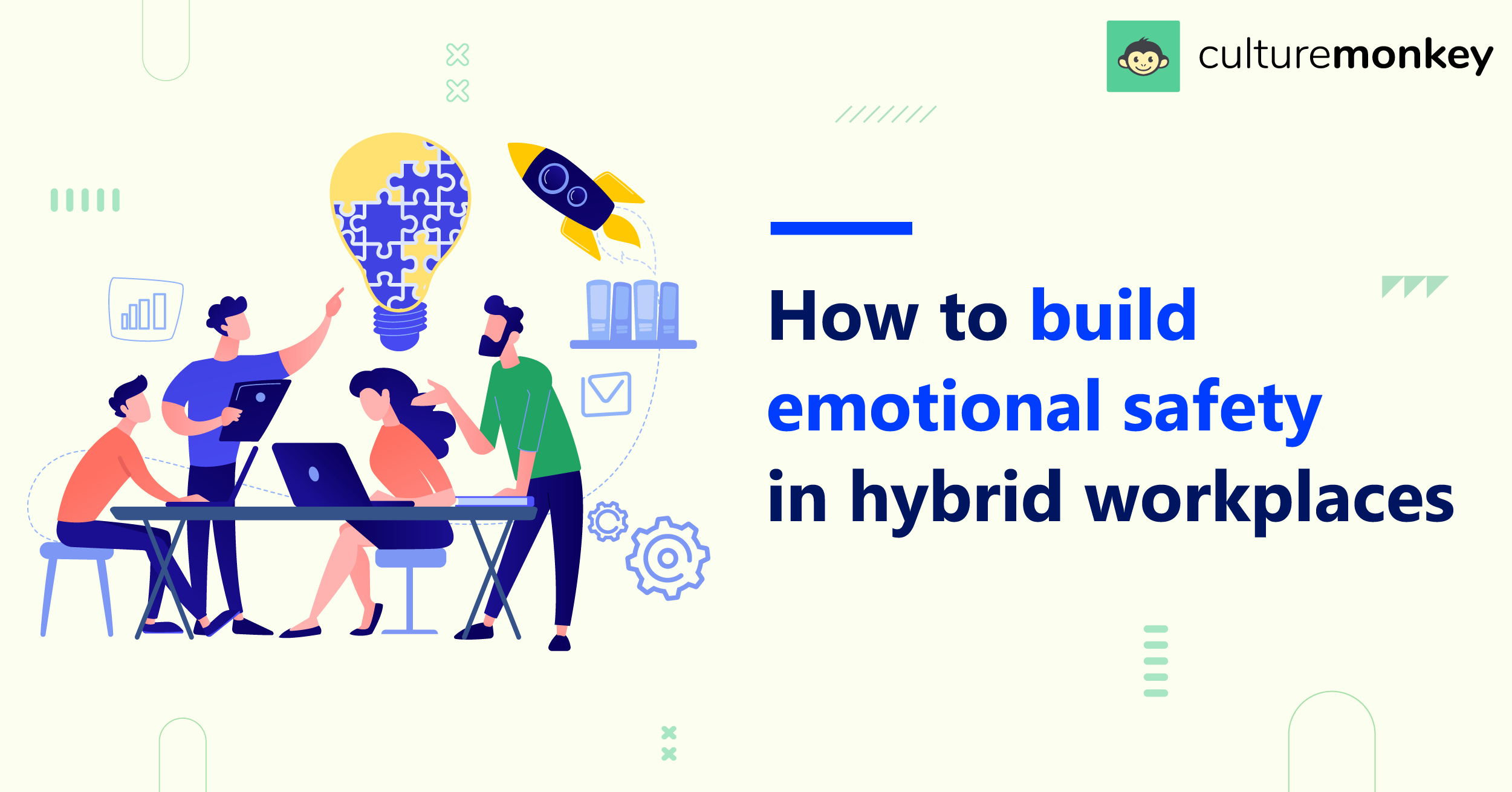How to build emotional safety in hybrid workplaces

Let's begin with an evidently easy question -- why do some workplace teams perform better than others?
Research shows that employee engagement and productivity depend on a lot of factors but, emotional safety at workplaces can enhance productivity by 12% with a reduction in employee turnover by 27%.
Providing emotionally safe workplaces to your employees is a foundational step in nurturing a high-performing team culture. Dr. Amy Edmondson, an avant grade of the term emotional safety, characterizes this term as a “climate of openness” which implies, that emotionally safe workplaces provide employees with an environment where they feel comfortable sharing ideas, accepting mistakes, and challenging the status quo.

In a hybrid work environment, there are altogether different challenges that need attention in creating emotional safety as employees in a hybrid setup don’t have direct interaction with one another as compared to in-person teams. To foster an innovative and productive culture, without letter communication and distance being a hurdle, you have to ensure that your teams are dynamic.
But, let’s first understand the four topmost effects of emotionally safe workplaces on employees and teams in a hybrid work environment.
1. It fosters inclusivity and belongingness:
True belonging requires trust, genuineness, and vulnerability. If employees feel safe to share their thoughts without worrying about the implications on their job or reputation, only then will the company have an ecosystem of inclusion and belonging in true terms. Leaders must truly try and make employees feel valued while encouraging them to make connections.

2. Enhances employee engagement:
Encourage your employees to bring their whole self to work and you will see how it drastically impacts their engagement levels. In emotionally safe workplaces, employees tend to contribute and ideate more while building strong supportive relationships.

3. Reduces employee attrition:
If your organization is creating an emotionally safe environment, then your managers must encourage opinions and avoid micromanagement. This will create teams that believe in taking risks without any fear of retaliation ultimately boosting morale and confidence. This will highly contribute to employee retention as employees will have a positive vision.

4. Boosts team performance:
Your employees need to feel that they won’t be humiliated for suggesting new ideas or asking questions. This will encourage them to take on new challenges, improve their skills and collaborate on projects efficiently eventually magnifying their performance.

There is no doubt that emotional safety isn't a "nice to have" for team relationships and workplace culture but it's a necessity for employee health, company growth, and long-term success.
Next, let's dive into the tricks for leaders as they wonder how to build an emotionally safe workplace for their hybrid teams.
1. Build a culture where you value and listen to your employees:
People can feel disconnected due to the lack of human interactions in a hybrid environment obstructing their ability to feel safe with one another.

To build trust and safety in hybrid workplaces, leaders must intentionally showcase empathy and create socialization opportunities for their team members to show who they are as people. Plan fun activities like video charades or scavenger hunts and constantly check on your employees especially remote ones to make them feel you care.
2. Communicate, communicate and communicate:
For employees working remotely, the physical disconnect can make the communication channels weaker. They may start overthinking and overanalyzing as they might feel left out of conversations and decisions.

To improve emotional safety, every individual must consciously focus on communicating. Managers must clearly lay down objectives and tasks and encourage team collaborations to make remote employees feel recognized and valued. This will encourage employees to speak up, ask questions, and share opinions.
3. Encourage a two-way feedback mechanism:
It is natural for remote workers to feel disappointed in receiving anonymous feedback especially if the communication gaps are not fixed.

Leaders can create emotionally safe workplaces for their employees by asking for feedback from employees across all levels and accepting their mistakes. Asking for productive feedback without any hesitation and taking action on that feedback will show your teams how emotional safety is important for you. This can eliminate the fear of making mistakes and motivate employees while accepting feedback.
Conclusion:
Just implementing these steps will not create ongoing and long-lived emotionally safe workplaces for your organizations. In order to do so, leaders must actively maintain and check upon these key factors in hybrid work. Do not ignore your employee sentiments and focus on creating “employee first” cultures. The power has shifted in the hands of employees, and it’s time organizations start rebuilding their workplaces keeping employees' needs at the center. Are you ready to create a happier workplace for your employees? Get in touch with our expert today, for a better tomorrow.



